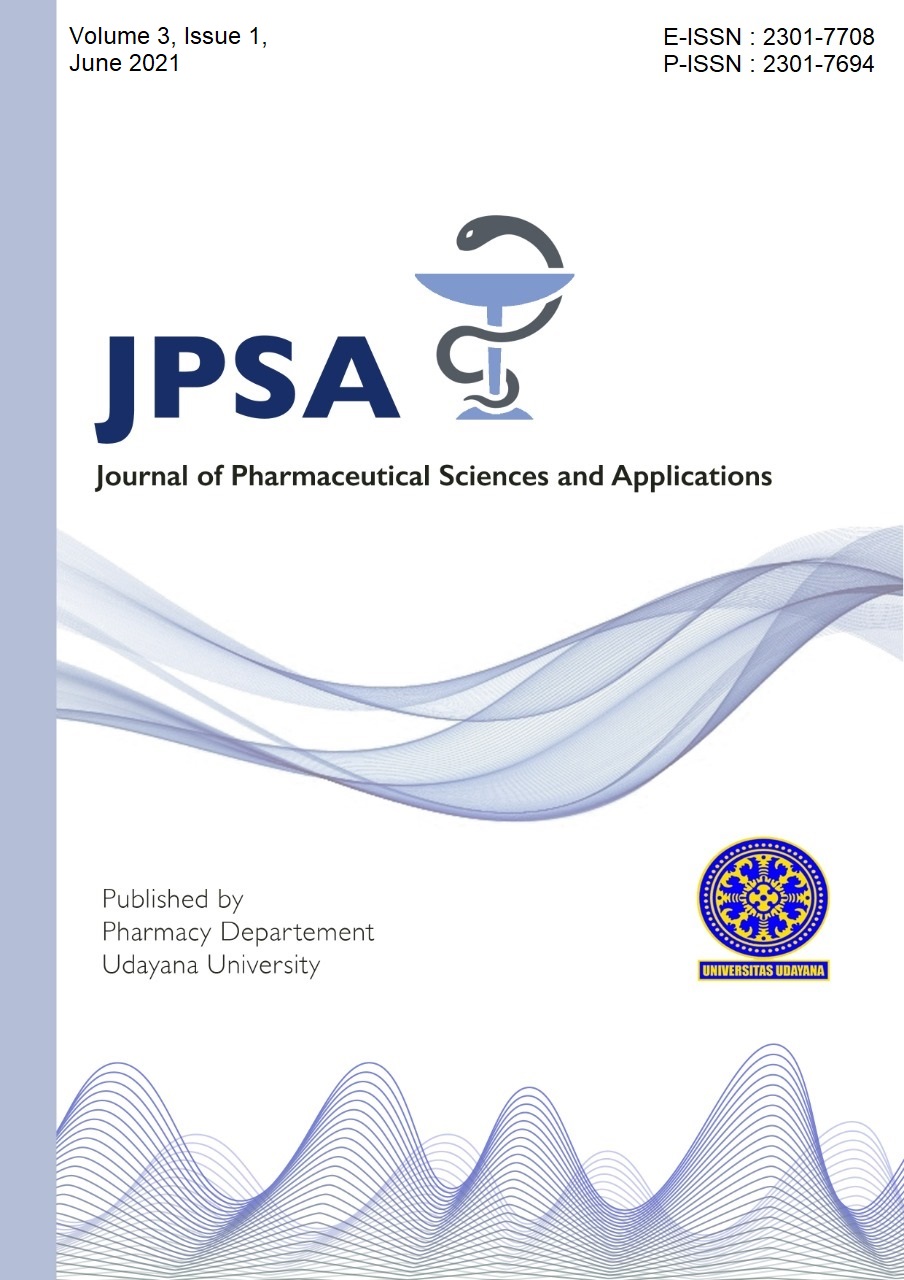A REVIEW OF PHYTOCHEMICAL AND PHARMACOLOGICAL STUDIES OF Piper retrofractum Vahl.
Abstract
Background: Javanese long pepper (Piper retrofractum Vahl.) is a plant that commonly found in Southeast Asia and is empirically used to treat various diseases. It is known that the phytochemical content in plants is one factor responsible for its pharmacology activities. The study of the pharmacological effects of herbal ingredients both pre-clinically and clinically is an attempt to prove their empirical properties. Aims: This review article aims to provide information to academics and the public regarding phytochemical studies and pharmacological activity that have been carried out regarding the Javanese long pepper plant. Methods: Article preparation was carried out through literature studies from various national scientific journals, international journals, and online reference books. Javanese long pepper data search system was based on chemical content and pharmacological activity studies either in vitro, in vivo, or clinical trials. Results: Phytochemical studies have shown that the plant parts of Javanese long pepper contain compounds such as alkaloids, saponins, tannins, flavonoids, steroids, triterpenoid, and glycosides. Based on studies of its pharmacological activity, Javanese long pepper has been reported to have antimicrobial, antioxidant, cytotoxic, analgesic, androgenic, aphrodisiac, antihyperlipidemic, antihyperuricemic, lowering leukocyte count, antileishmanial and immunostimulant effects. Conclusion: The efficacy of Javanese long pepper has been scientifically proven to have pharmacological effects either through in vitro or clinical studies which can be taken into consideration for the development of traditional medicinal products.
Keywords: Javanese Long Pepper, Piper retrofractum, Phytochemical, Pharmacology activity
Downloads

This work is licensed under a Creative Commons Attribution 4.0 International License.
Authors who publish with this journal agree to the following terms:
Authors retain copyright and grant the journal right of first publication with the work simultaneously licensed under a Creative Commons Attribution License that allows others to share the work with an acknowledgment of the work's authorship and initial publication in this journal.
Authors are able to enter into separate, additional contractual arrangements for the non-exclusive distribution of the journal's published version of the work (e.g., post it to an institutional repository or publish it in a book), with an acknowledgment of its initial publication in this journal.
Authors are permitted and encouraged to post their work online (e.g., in institutional repositories or on their website) prior to and during the submission process, as it can lead to productive exchanges, as well as earlier and greater citation of published work. (See The Effect of Open Access).

This work is licensed under a Creative Commons Attribution 4.0 International License.


 HOME
HOME
















